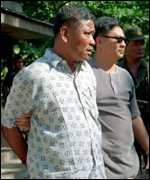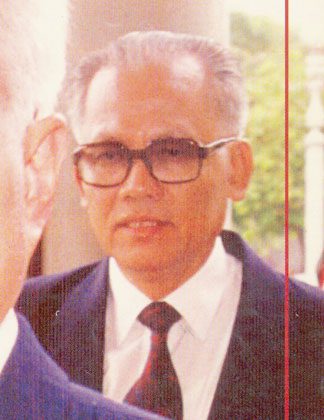On June 4, 1949, the French parliament transferred the territory of Cochinchina (known as Kampuchea Krom to Cambodians), which they had ruled as part of French Indochina, to Vietnamese administration.

On 4-5 June 1990, Japan convened the Tokyo Conference on Cambodia- its first major effort to become involved in the Cambodia peace process. Tokyo’s initiative backfired when the Khmer Rouge failed to attend.
On June 4, 2017, 7.8 million of 9.6 million eligible Cambodians were registered to vote in commune elections. 94,595 candidates from 12 political parties contested the 11,572 commune council seats in 1,646 communes of Cambodia. Voter turnout was a record 90.37%. The CPP took 3,540,056 (50.76%), but saw huge gains for the later dissolved CNRP, who got 3,056,824 votes (43.83%).
On 5 June 1960, after Prince Sihanouk introduced constitutional amendments to create the new post of Head of State of Cambodia, which provided ceremonial powers equivalent to that of the king, a referendum held to approve Sihanouk’s proposals. The vote was passed, and Sihanouk was formally appointed Head of State on 14 June 1960.
On June 5, 1962, Ambassador Trimble had a meeting with Sihanouk, who was gifted a Sears barbecue set acquired courtesy CINCPAC. The Prince told Trimble “he had plenty of money to retire and live in exile if this desire Cambodian people. He not interested in power for power’s sake but only trying to work for his own country. All he wished was to be left alone and to live in peace and on good terms with neighbors.” FULL ACCOUNT OF MEETING HERE
On June 6, 1952, a joint announcement by the United States and Cambodia told of plans to raise the United States Legation in Phnom Penh to Embassy status. On June 24, 1952, Ambassador Donald R. Heath received confirmation of his appointment from the United States Senate. Ambassador Heath remained resident at Saigon. The first Ambassador resident at Phnom Penh was Robert M. McClintock, who presented his credentials on October 2, 1954.
On June 6, 1913, George Groslier, a 26 year old French explorer, set out with a small group of native porters on a six-month trek in the Cambodian wilderness. The French government charged Groslier with documenting the most remote sites of the Khmer empire of old – including Preah Vihear, Wat Phu, Beng Melea and Banteay Chhmar.

On June 6, 1970, an agreement was made between Cambodia and the Republic of Vietnam, that the military on either side could freely conduct its campaign against the communists within a 16-kilometer-wide zone on either side of the border. This was cancelled by Lon Nol in August 1971.
On June 6, 2003, after tough negotiations, the United Nations and Cambodia agreed to an international tribunal for former Khmer Rouge leaders.
On June 7, 1977, Vietnam proposed high-level talks to discuss outstanding issues after a series of border clashes with Democratic Kampuchea.
On June 7, 1999, former Khmer Rouge commander Nuon Paet went on trial for the murder of Briton Mark Slater, 28, Australian David Wilson, 29, and Frenchman Jean-Michel Braquet, 28 in Kampot in 1994. At his trial, Paet (sentenced to life), implicated General Sam Bith and Colonel Chouk Rin, who had defected and made officers in the Royal Cambodian Armed Forces. Sam Bith, who had become a RCAF 2 star general being paid a monthly salary, could not be found for trial. Journalist Tom Fawthrop later tracked him down to Sdao, between Battambang and Pailin. He was living next to the local police station. Bith was sentenced to life for the same crimes on December 23, 2002. He died in Calmette Hospital on February 15, 2008, aged 74. Chhouk Rin, given a life sentence in absentia in 2002 escaped to Anlong Veng, where he was captured in October 2005. His appeals were rejected.

On June 7, 2003, The Law on Denial of Serious Crimes Committed During the period of Democratic Kampuchea was passed.
On June 8, 1962, US Ambassador William Cattell Trimble left his posting in Cambodia.
On June 8, 2012, William Edward Todd became US Ambassador Extraordinary and Plenipotentiary in Phnom Penh.
On June 10, 1997, Pol Pot ordered the execution of Son Sen and his family for planning to negotiate with the government. Khmer Rouge fighters in Anlong Veng went to the house of the former member of the Central Committee of the Communist Party of Kampuchea, killed him, his wife Yun Yat (herself a former DK Minister) and 10 other persons. Then the bodies were run over by trucks.
During the Democratic Kampuchea regime, Sen oversaw the Party’s security apparatus, including the Santebal secret police and the notorious security prison S-21 at Tuol Sleng, and was responsible for ordering the massacre of more than 100,000 in the Eastern Zone of Cambodia during the last six months of 1978. His death caused a rift in the remaining Khmer Rouge- leading to Pol Pot’s arrest by Ta Mok. *Note Wikipedia incorrectly gives the date as June 15.

